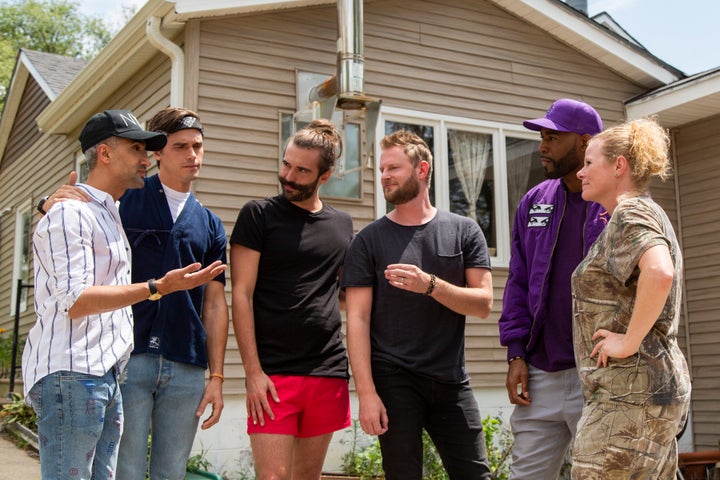
Have you noticed an increase in French tucks going around? Seen more precisely rolled sleeves on your friends than usual? Are there more tasteful graphic t-shirts, understated kitchen cabinets, body confident people, and fabulous haircuts in your life these days?
If there are, it may be because the third season of Queer Eye has been out on Netflix for a little over two weeks now and has gone down as well as the first two seasons of the streaming hit.
This year, Karamo, Tan, Bobby, Jonathan, and Antoni find themselves parachuted in to the lives of another group of individuals in need of their lifestyle improvement help in fashion, design, culture, food, and grooming.
As far as an appraisal of the quality of the show goes, it’s exactly as good as the first two seasons. What we have here is no mere continuation of the, at the time ground-breaking but now dated by necessity, original Queer Eye For The Straight Guy but rather a top down reboot and revamp fit for modern times. It takes the original concept in a new direction and is right to do so.
In a previous blog on the HuffPost, I’ve gushed about how good Queer Eye is and I completely stand by what I said at the time. In its first season, the show focused on, as I said in Queer Eye Is Back Soon - Here’s Why That Matters, “real-life men doing real-life man things” and helped them in an affordable and accessible way. Each participant in the first season was a bloke whose life was transformed by the Fab Five working their magic on him and helping him be the most stepped-up and elevated version of himself that he could be.
However, things have changed since season one. For example, season three of Queer Eye includes among its “heroes” (the term the boys use to describe each of the folks they help) a black lesbian, a pair of sisters who run a BBQ restaurant, a committed female hunter, a single father, a nervous groom, a grieving dad, a shy gamer, and a man whose procrastination and lack of self-confidence are causing problems ahead of the birth of his kid. While the story of each hero is thoroughly engaging and tear-jerking in equal measure, there is a sense that the show has moved away from the way it started back in 2018.
This is why it works and continues to work.
When Queer Eye was brought back, it was initially aimed straight at men and for the majority of seasons one and two it succeeded in its mission of improving men’s lives and giving us a televised lifestyle magazine that contained realistic goals. However, now that we are in season three and the Fab Five are all household names, published authors, and Instagram thirst-traps, Queer Eye has set its sights far higher because season three is all about issues.
Whether it’s homophobia and anti-gay bullying, the pressures of being an expectant parent, growing old gracefully, masculinity, femininity, mental health issues, confidence, or any of the other plethora of issues that Queer Eye takes on in what has become its signature supportive and positive way – the issues at the heart of all the individual heroes’ journeys are front-and-centre this time around.
This change in direction, or perhaps specifically in content, is vitally important in cultural terms as it moves Queer Eye’s goalposts once more and fits in with what I believe is its overall mission statement - to improve lives. As Tan, the show’s resident fashion guru puts it, “we’re about acceptance” whereas the original show was about tolerance – the whole show as a project is about a widening of scope and, by using the confidence and backing it has built up as one of Netflix’s run-away successes, it is able to do exactly that.
Fundamentally, that is why this seemingly trivial little show about five gay guys who drive around the South helping people is so important and continues to matter – it never stops trying to get better and be better.
By moving from the trivial to accessible lifestyle for men to confronting issues that really matter, Queer Eye does what truly great inspirational TV shows do - it leads by example; Queer Eye enjoins us all to get better and to stand up a little taller by doing better and standing that bit taller with us in each season.
In a world fractured by division and in a popular culture that so often revolves around conflict and pain, it seems unlikely that a show that challenges us to be better by getting better itself will ever not matter.
